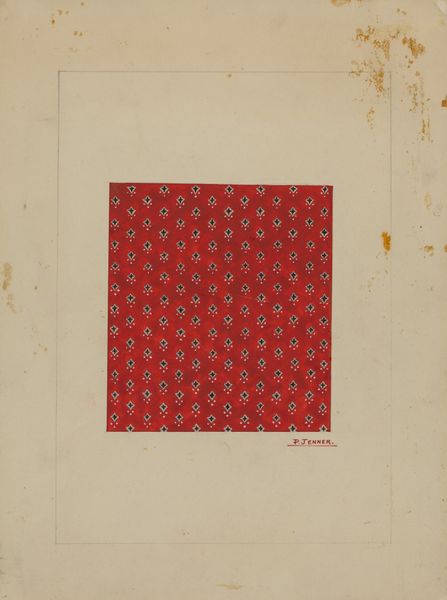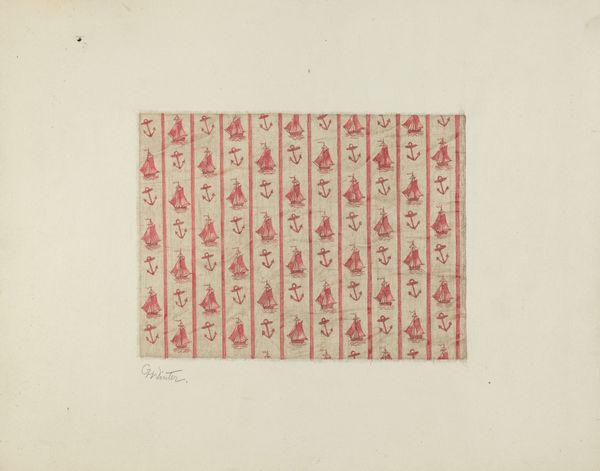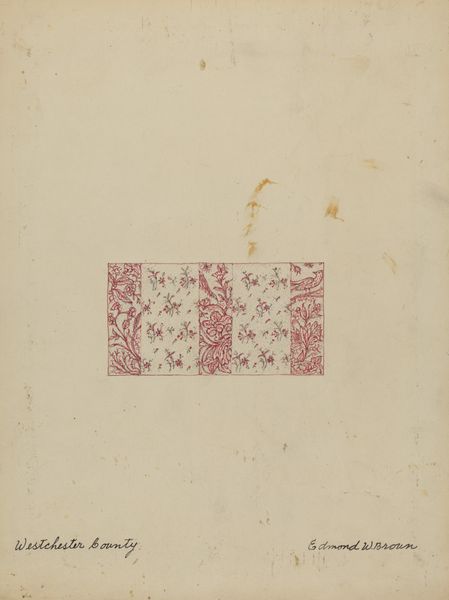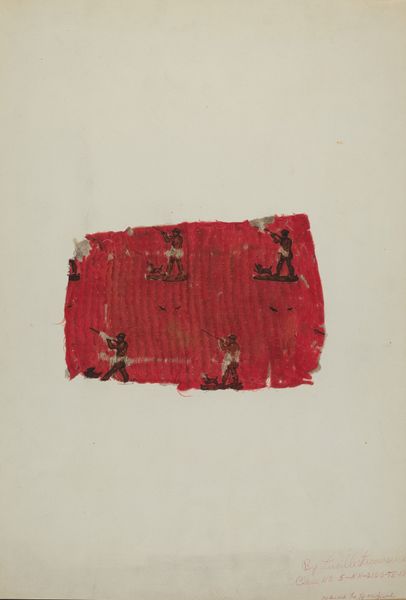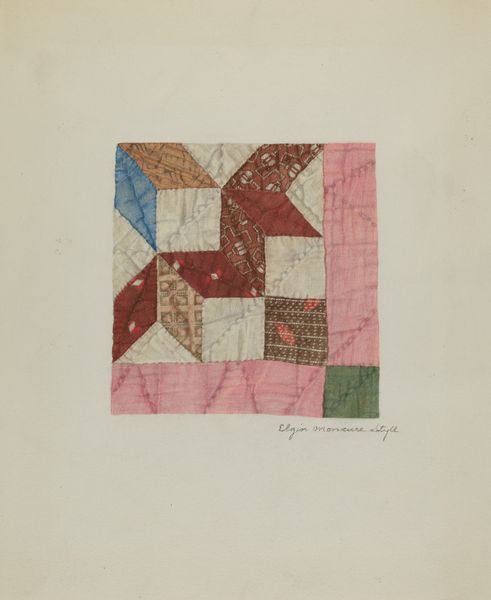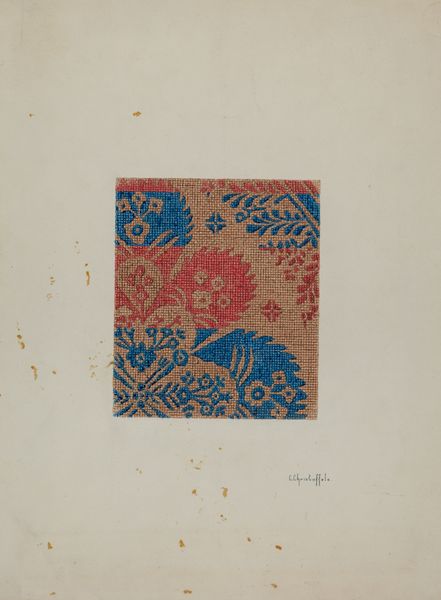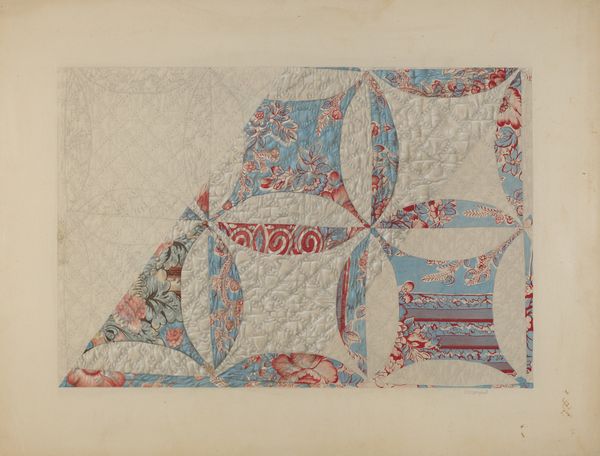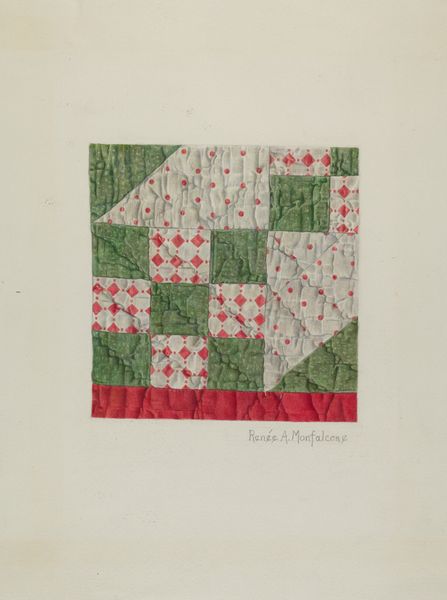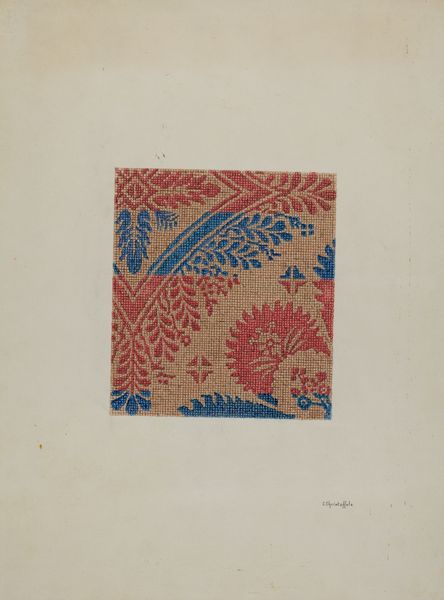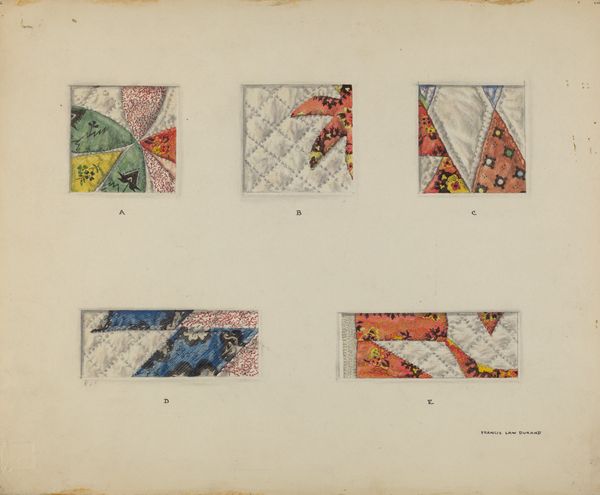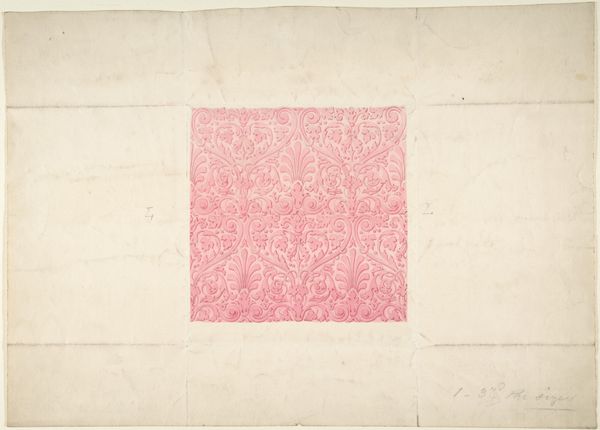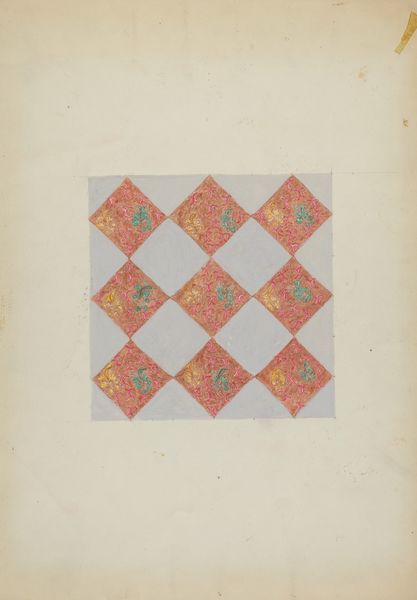
paper, watercolor
#
water colours
#
paper
#
watercolor
#
watercolor
Dimensions: overall: 23.3 x 30.6 cm (9 3/16 x 12 1/16 in.)
Copyright: National Gallery of Art: CC0 1.0
Editor: This is “Quilt” from around 1937, by Francis Law Durand. It appears to be a mixed media piece on paper with watercolors depicting a quilt pattern. I find the geometric shapes both comforting and visually stimulating. How do you interpret this work, with its simple shapes and repetitive patterns? Curator: It is intriguing, isn't it? The quilt is an especially powerful object laden with cultural memory. Here we see an engagement with "domestic arts," items most often created and used in a home and familiar to all viewers in the United States at that time. Does the rendering strike you as folksy, or rather precise? Editor: I see what you mean, with the pattern evoking warmth, but the lines seem meticulously drawn, which creates an interesting tension. How does this precision affect the quilt's symbolism? Curator: The geometric elements and precise lines might relate to ideals of order, and a particular engagement with geometry, measurement, calculation; a design intended to communicate more than mere domesticity. But let’s not overlook the imperfection in a "homemade" object or pattern – perhaps this is a space where both order and creativity, or even accident, can coexist? What visual cues suggest that to you? Editor: That tension between order and the handmade makes me reconsider it. The slight variations in the watercoloring give it a human touch, offsetting the strict geometry. Curator: Exactly. And it may symbolize a delicate balance between tradition and individual expression; we may not know the maker's conscious thoughts, but perhaps Durand offers an idea of the emotional and aesthetic connections these everyday objects create. Editor: That’s fascinating! I had not considered how folk art can carry such layered meaning through these opposing qualities. Curator: Quilts as art give rise to such rewarding contemplations, precisely because they embody both public and personal histories in compelling ways.
Comments
No comments
Be the first to comment and join the conversation on the ultimate creative platform.
